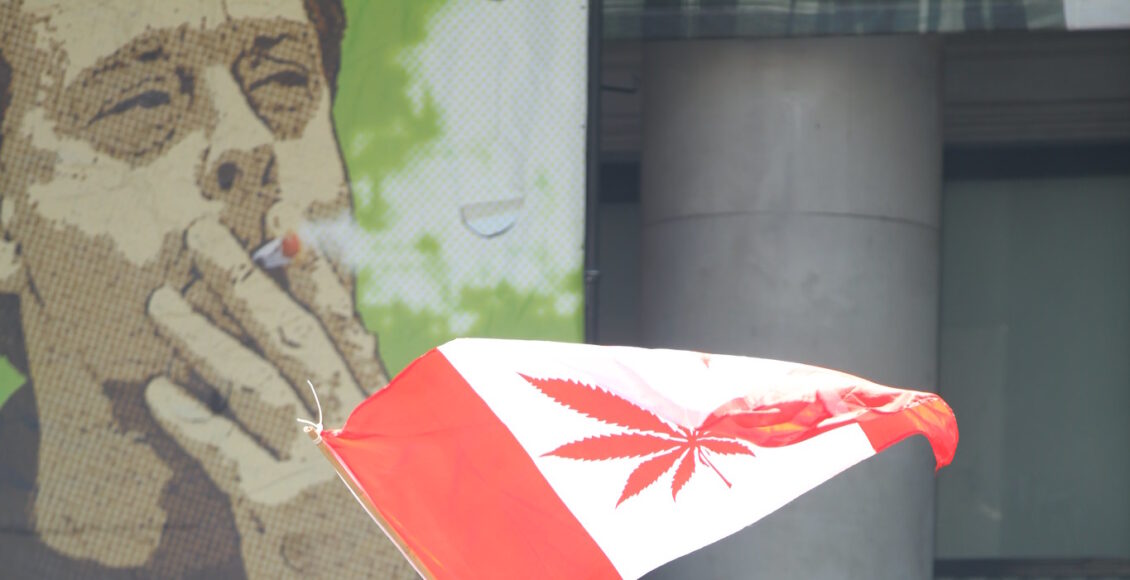The Impact of Cannabis Legislation on Canadian Youth

In 2018, Canada became the first major industrialized nation to legalise and regulate cannabis nationwide in the Cannabis Act. The government declared the Act’s purpose was to “protect public health and public safety,” and, in particular, to restrict youth access to cannabis and to protect young people from inducements to use cannabis. However, as a high school student in Toronto in the years after the Act was passed, I witnessed firsthand how this policy failed to effect change. On my daily walk home from school, I passed at least six cannabis dispensaries, often observing teenagers entering them and purchasing cannabis without much difficulty.
I started high school in 2019, one year after the Act was passed. Thus, I saw firsthand that even if the government could attempt to restrict youth cannabis consumption, all that was being achieved was ensuring access to safe cannabis, not decreasing usage overall. Statistics and polling data have confirmed that the Cannabis Act has failed in its goal to limit youth cannabis usage, but it has successfully reduced the consumption of illegal cannabis, which should have been its initial goal.

Prior to legalisation, cannabis usage was prominent in Canada. Since legalisation, data shows that the general public’s use of cannabis has increased, as the decrease in stigmatisation and heightened availability encourage consumption. In 2023, 43 per cent of youth reported that they had used cannabis once or more in the past year, an increase from 36 per cent in 2018. However, statistics show that the age that teenagers first use cannabis has remained largely unchanged, increasing from 14.2 to 14.3 from before the Act’s passage compared to after it. Moreover, after the Act passed, the number of students who have said that obtaining cannabis would be “very or fairly difficult” decreased from 46 per cent to 42 per cent from 2016 to 2017. The same study reported that students who said obtaining cannabis is “fairly easy” only increased by 1 per cent. Data regarding underage consumption is limited, and any existing statistics must be examined with the knowledge that given its illegality for minors, polling about cannabis usage may not be entirely accurate. However, assuming these statistics are capable of indicating general trends, they clearly show that usage of cannabis has increased since the Act passed and cannabis has only become more accessible to youth; a clear failure in the initial goal of the Act.
Arguably more significant than the increase in youth cannabis usage, however, is the data that the amount of cannabis consumed from legal sources has increased. In 2023, the CCS reported that of underage cannabis users, 41 per cent get their cannabis from “legal purchases” and 43 per cent from “social sources.” Only 1 per cent of respondents said they obtained cannabis from illegal sources. This should be seen as an accomplishment: the increase of legal, safe sources of cannabis has ensured that youth are better protected from the illegal drug supply chains and less at risk of consuming cannabis laced with other dangerous substances.

Crucially, legalisation has also decreased youth possession charges, which has reduced youth interaction with the criminal justice system. Reports show that the decrease in charges has been as much as 26.4 per cent in youth aged 12-17 from 2015 to 2019. Criminal charges and interaction with the criminal justice system have been demonstrated to create barriers to entering the workforce and continuing education. However, this does not mean that cannabis usage has been reduced. Instead, this statistic demonstrates the reduction of underage interaction with the criminal market and the decrease in police attention to this issue.
So, six years later, what now? Significantly more research is needed into the effects of cannabis legalisation for youth. Specifically, research on how legalisation has affected youth rates of addiction, dependency, and the effects of long term usage would help inform future government action, as well as studies that aim to discover how youth perceive cannabis and their awareness of its effects and risks. This research is needed for the Canadian government to create more effective laws that will truly reduce youth access to and the promotion of cannabis. Additional research would help demonstrate to youth that cannabis, though legal, is still detrimental to brain development, health, and well-being.
Moreover, dispensaries should be more strict with who they sell cannabis to and the Canadian government must regulate distribution more thoroughly. Though “communicating information about its price or distribution in a manner that could be appealing to young persons” is prohibited by the Act, the vague wording of this guideline means that cannabis products can evade this law. Cannabis products are often packaged like candy in order to attract children and young adult consumers. Most importantly, though, education can prevent harmful use of the drug. Like alcohol, cannabis is legal, and underage usage is unavoidable. Therefore, education must be a primary focus of the government to act as an early warning of the consequences of cannabis dependency, its long term health effects, and the importance of responsible usage.
The Cannabis Act has made strides in protecting youth from illegal, dangerous cannabis products. Yet, youth access to legal cannabis remains a reality. Moving forward, the Canadian government’s focus should shift from unattainable goals like preventing all youth consumption to more practical solutions, such as stricter regulation, education, and harm reduction.
Featured image: “Canada / Cannabis Day, Marijuana Party 2014 @ Art Gallery” by “GoToVan” is licensed under CC BY 2.0.
Edited by Alexandra Agosta-Lyon.
